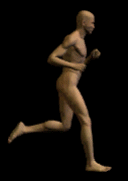|
Definition: "An ergogenic aid is any substance or phenomenon that enhances performance "
|
|
||||||||
31.08.2009 |
|
|
Cardio in two parts burns more energy
The only way to lose weight is to burn more energy than you eat. In an article written almost twenty years ago, published in 1990 in the British Journal of Sports Medicine, we read about a way to get your body to burn just a little more energy by exercise, which is interesting for bodybuilders. Are you ready for it?
But the body's capacity to recover from physical exercise is limited. A healthy person whose only exercise is running can only become more healthy by running for fifty minutes three times a week. For a power athlete who's already pushing himself to the limit, extending the training routine will take place at the expense of his progression.
The longer your cardio session lasts, the more of the stress hormone cortisol your body starts to produce, and the more you limit your growth. So the solution is to make your cardio sessions not too long. But in a short session you burn less energy than in a long one.
You may be able to solve the problem, however, by dividing your cardio into two sessions, according to a piece of research done at Northeastern Illinois University and published in 1990. If you do this, you not only limit the negative impact of cardio training, but you also raise the amount of energy you burn. We're not talking about the energy you burn during the cardio session, but afterwards. After physical exertion, your body uses energy to return to its resting state. During exercise your heart, for example, beats faster and therefore burns more energy. When you stop, it takes a while for your heart rate to return to normal. Replacing energy or fluid used, or letting muscle tissue recover, are all processes that cost energy.
Twenty minutes after stopping running the women's oxygen consumption had returned to normal. It made no difference whether they had run 25 or 50 minutes, their EPOC was the same. But when the women had run in two sessions, the women’s total EPOC was twice as high.
Source:
|
|


